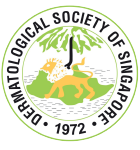Acral cutaneous lesions in the time of COVID‐19
JEADV April 2020, https://doi.org/10.1111/jdv.16533
Reviewed by Dr Etienne Wang, National Skin Centre

Recalcati et al sent a Letter to the Editor of the Journal of the European Academy of Dermatology and Venereology in April 2020, reporting a series of 14 cases of chilblain-like acral lesions during the peak of the COVID-19 pandemic in Italy. Out of these 14 cases, of which 11 where children, only 3 nasopharyngeal swabs and 2 rectal swabs for SARS-CoV-2 PCR testing were carried out, all of which turned out negative. When the authors looked for acrocyanotic lesions in a separate series of 109 confirmed COVID-19 patients, 2 patients had acral lesions that may have been associated with vasculopathy.
There have been a slew of case series from several countries describing increased incidences of acrocyanotic lesions, vesicular eruptions and other rashes viz. urticaria, targetoid lesions, during the COVID-19 pandemic. Not all of these reports were supported with positive SARS-CoV-2 PCR tests, probably because the availability of PCR tests may have been limited at that time in the pandemic. After reading these reports, I have referred one patient with targetoid lesions and acral cyanosis, and another patient with Tzanck-negative vesiculobullous eruption, to the National Centre of Infectious Diseases in Singapore to exclude COVID-19. Both patients tested negative for SARS-CoV-2. It is possible that skin manifestations of COVID-19 occur sometime after the respiratory phase of SARS-CoV-2 infection, resulting in a negative nasopharyngeal SARS-CoV-2 PCR result. This resembles the clinical course seen in the increasingly described Multisystem Inflammatory Syndrome that resembles Kawasaki disease in children and teenagers that has also been linked to COVID-19. These reports reflect some of the challenges faced in characterizing clinical manifestations during novel pandemics, and true associations and clinical features may only be appreciated fully in retrospect.














